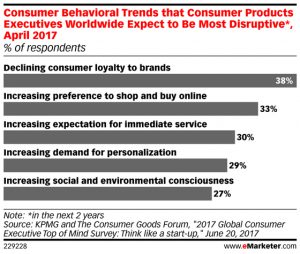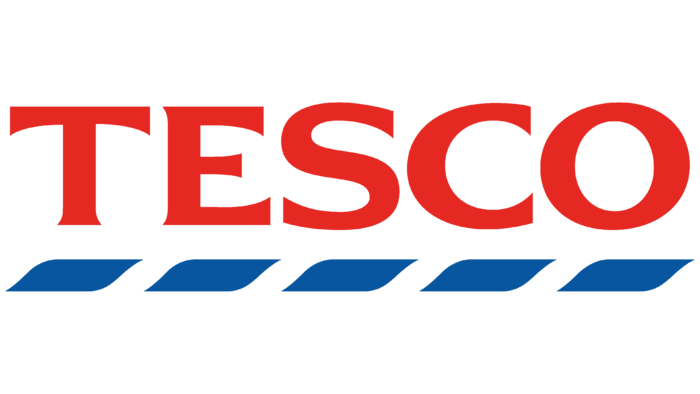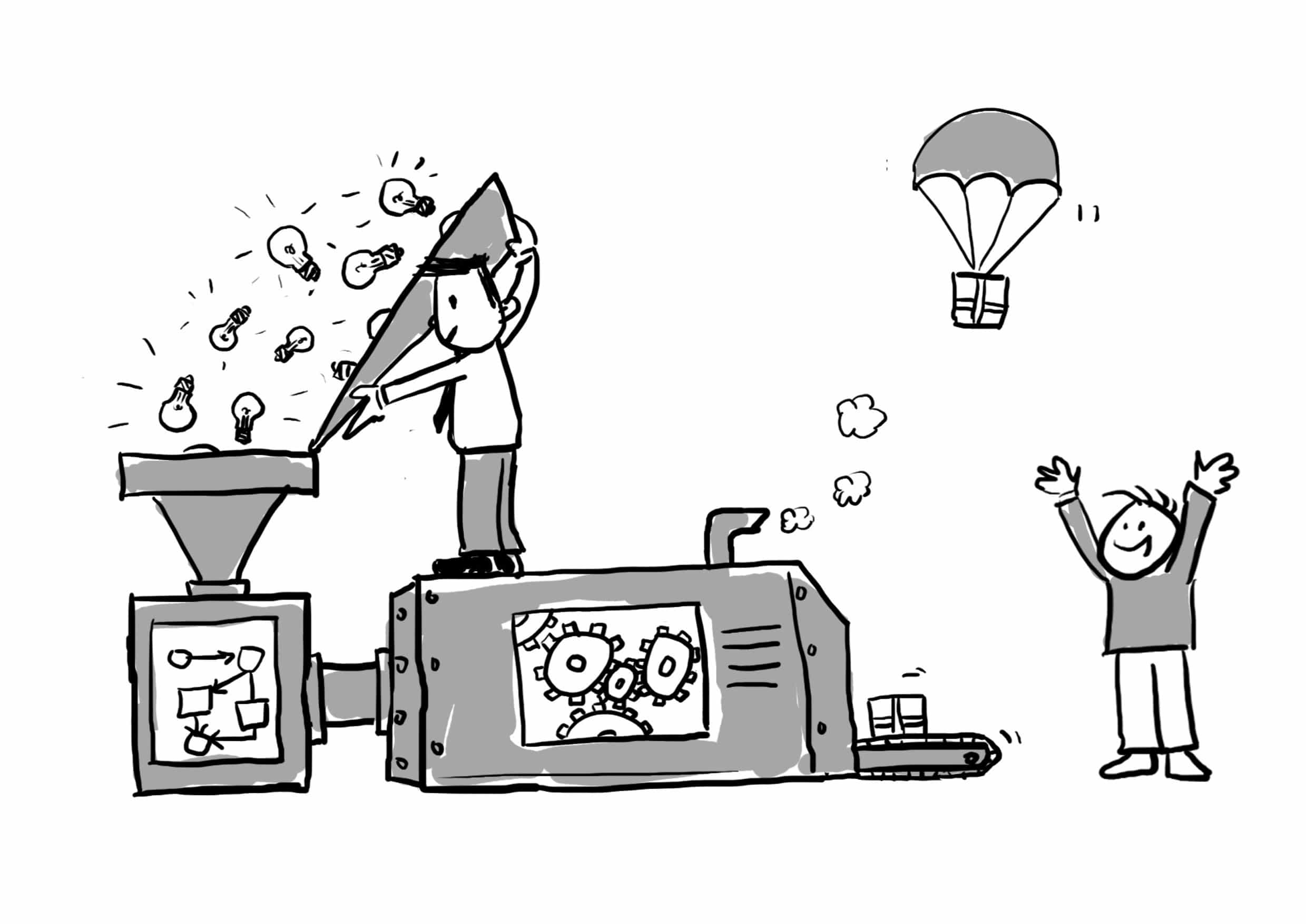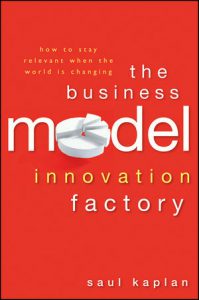Category: Marketing & Brand Building
How Marketers Can Benefit From More Than Technology: Modern Marketing
Just like most entrepreneurs and business people, I go to my fair share of conferences. I believe that marketers can benefit from being regularly challenged by new thinking and ideas.
One that stays in my memory for many reasons, was an event I attended in San Jose, California. Some say California is the centre of internet marketing; the San Francisco area for technology and San Diego for marketing. I tend to agree after having recently attended events in both cities.
The conference that changed many of my views on modern marketing was one about how business people, not just marketers, can break through our self-limiting behaviours. It is this idea which prompted today’s post. How we marketers can relinquish our well-established thoughts and actions to make our businesses grow more profitably. If this is of interest to you too, then read on.
HEART-CENTERED VERSUS CUSTOMER-CENTRIC
The conference I attended in San Jose was a great opportunity for me to meet many other people from around the world. People who want to make their businesses more heart-centered. You know that I am a champion of customer centricity. I love to support companies that want to put their customers at the heart of their businesses.
So you might be wondering what the difference is between a customer-centric and a heart-centered business. After the conference, I would say that in my opinion, not much. I believe it is difficult to think customer first without it also involving the heart; at least, it should.
As we try to put our customers at the centre of our organisations, it is through a concern to satisfy and delight them. A heart-centred business would probably go even further to ensure that what they do also benefits non-customers, or, at least, doesn’t harm them.
Creating shared value has become a strong commitment of many of the leading global players in the consumer goods market. Reliance Jio, Merck and Bank of America lead the way according to the Fortune “Change the World” List.
If the topic inspires you then you might also be interested in reading an article on “Innovation and Creating Shared Value”, which I was invited to contribute to one of the first issues of the Journal of Creating Value. I will also be speaking at the 2nd Global Conference on Creating Value in New York later this year. So let me know if you too will be attending and we can meet up.
CUSTOMER FIRST EXAMPLES
But back to defining the types of business. Which is yours? Heart-centered or “just” customer-centric? Or are you not even there yet?
Do you think customer first but forget about those who are not yet your customers? That’s a dangerous thing to do as you may be limiting your brand’s potential. Here are a few current habits that some companies have, which show how customer centric they are – or not:
- Asking credit card details for a “free” offer. This
Top 10 Posts on Brand Building Strategies of 2018
How to Update Your Marketing with a Customer First Strategy
5 Business Success Factors (So You’re Ready for Anything!)
We are sweltering in the Northern Hemisphere with record temperatures, so here’s a “cool” idea on how businesses can get ready for anything by applying these success factors.
Every winter, the media is full of stories of record snowfalls somewhere in the world, whether in the US, Europe or in the Far East. Despite all the sophisticated technologies at our disposition, we just never seem to be prepared. So what are the success factors of readiness?
Remember winter storm Juno in the USA in 2015? It dropped a couple of feet of snow on the Eastern coastline of North America. According to the Weather Channel its snowfall broke records in Worcester, MA, although in most other places it fell far below that of other storms from 2013 all the way back to 1978.
In the same year, in the North of the UK, the region was battered with a rare blast of thundersnow – an unnerving combination of thunderstorms and downpours of snow. As if that wasn’t enough, they were soon preparing to do battle with the elements with yet another storm shortly afterwards.
Now what do all these storms have to do with business you might wonder? Well for me they are a great illustration of the problems that many companies can face from time to time. Governments and city maintenance teams prepare for winter by organising vast stocks of grit and salt, as well as heavy snow-clearing machinery. But despite all this preparation, they still seem to be caught off-guard when they need to use them.
The same goes for businesses. Companies follow trends and expect to be ready for anything; they’re not!
The reason is that there are two serious problems with that way of thinking:
Firstly they are all following the same trends, attending the same trend “shows” & conferences, and getting the same or at least very similar trend reports.
And secondly, they think that knowing the trends will somehow protect them from future risks and catastrophes. However, having the right material still doesn’t stop bad things happening, as we’ve seen this winter.
So let’s take a look at what you can do to be better prepared and not get regularly “snowed-in” as many countries are this winter.
The Problem with Trend following alone
As I already mentioned, trend following suppliers are providing almost identical information to all their clients. This results in their clients then working on the same ideas & concepts and eventually launching very similar, non-competitive products and services. Have you never wondered why suddenly everyone is talking about a certain topic, or using similar slogans in their advertising? Simplistic trend following is probably the reason.
As an example, think about how many companies have used the idea of “YES” and “NO” in their advertising in the past couple of years. These include:
- The Swiss Migros Bank: see the videos here – sorry only in French & German but still easy to understand
- BMW 320i YES, YOU, CAN
- Orange telecom mobile
Why You Struggle To Meet Your Business Objectives (And how to Crush them)
“There may be customers without brands, but there are NO brands without customers!”
I am often quoted as saying this and yet I still find most companies spend more time thinking about their brands than their customers, which is alarming to say the least! And you?
Last week I spoke about identifying the exact category in which you are competing. If you missed it, then I suggest you read “You’re Not Competing In The Category You Think You Are!” before continuing. You will never be successful if you don’t understand the category people put you in and the competitors they compare you to.
In the post, I explain that we often work with a category definition that is based upon industry norms rather than that of our customers. For instance you might segment by price or demographic groups, whereas your customers group brands by flavour or packaging.
Understand how customers see the category and its sub-segments can make a huge difference to your success in satisfying your own target customers.
This week I want to continue the theme of taking the customers’ perspective by speaking about our own business objectives. You know, the topics that make up our business and marketing plans with such lofty ambitions as:
- Grow our market share to X%
- Become the category captain/leader in Retailer Z
- Launch three new brand variants
All of these may be valid business objectives, but they are not customer focussed. They start from the business perspective.
Adopting a customer-first strategy means turning business objectives into customer aims, by taking what is sometimes referred to as a bottom-up, rather than a top-down approach.
Here are some questions to help you identify your customers’ aim, their attitudes and behaviours that you are trying to influence:
1. Who are you targeting?
Every brand has a target audience. This is a sub-segment of all category users. Yes, you do need to segment users and target the most relevant and most profitable group of them for your brand, and then ignore the rest. If you are trying to appeal to everyone you end up pleasing no one!
“If you are trying to appeal to everyone you end up pleasing no-one!”
2. Why are they currently using your competitor’s brand?
In order to attract your competitors’ customers, you need to understand their motives, why they are preferring the competitive brand to your offer. This information can come from many sources, such as market research, social media, or care centre contacts.
3. What reason might make them consider switching?
If you are to appeal to your competitors’ customers then you must be able to satisfy them at least as well, and ideally better than does their current brand. What do you know about the criticisms customers have of the brand? What benefits do you offer and they don’t, or only partially? Could these be appealing to some of their customers?
4. Why do you believe that you can appeal to them now but didn’t before?
Do you have … Click to continue reading
Smart Marketing for Smart Customers (What Marketers Need to Know Today)
Our customers are getting smarter every day. But are we performing smart marketing too? I don’t think so.
When I have the chance to look at what most organisations are doing, I see that they are still living in the past of traditional media and have hardly dipped their toes into new media. Or they are using social media but still treating it as if it is traditional media! Neither plan will work. Here’s how marketers should be reaching, connecting and engaging their customers.
1. Don’t talk to everyone
We all know that you can’t please all the people all of the time, so why are we marketers still mass producing our messages? In the past, the annual marketing plan requirement was for us to develop a few ads for each of our planned campaigns.
Today with social media, we need a constant flow of new ads and new campaigns, each targeted at a sub-group of our audience, with individual messages. We need to not only to be mobile, but flexible, adaptable and ready to take advantage of any opportunity, the moment it happens.
One of the best examples of this is still Oreo’s reaction to the power outage at the Superdome during the Super Bowl XLVII in 2013. The cookie’s social media team jumped on the cultural moment, tweeting an ad that read “Power Out? No problem“ with a starkly-lit image of an Oreo with the caption, “You can still dunk in the dark.” Read more in this article on Wired.
Since then, we have seen a few more brands “stage” similar events during the Super Bowl; I’m referring to Tide and Snickers of course. What all these memorable moments have, is a deep understanding of both the audience – in this case of the Super Bowl – and their target customers.
Smart marketing focusses on understanding the customers of a targeted group of category users. And accepting to ignore those that don’t fit, even if they are currently using the brand. Are you brave enough to do the same?
2. Stand out from the crowd
A recent article in Forbes by Larry Myler mentioned and-out-in-a-crowd-of-competitors/#c0dbd4762fa9″ target=”_blank” rel=”noopener”>7 ways for a br>and to stand out from the crowd. These were:
- Provide Legendary Customer Service.
- Admit Mistakes and Fix Problems to Build Stronger Relationships.
- Be Honest About Your Products and Services.
- Come Up With Something New.
- Embrace Corporate Social Responsibility.
- Start a Blog.
- Offer a Guarantee.
What I find interesting about this list is that the first four concern customer service excellence, but the last three are more about the organisation. OK so they should also impact the customer, but not as directly as the first four.

The other thing, for me at least, is that I don’t think any of these will actually make a brand stand out from the crowd! After all, they are the table stakes for the social world we live in today. What do you think?
A survey … Click to continue reading
You’re missing out on A Free Communication Channel! (Any guesses what it is?)
“Never miss an episode. Subscribe on Apple Podcasts to get new episodes as they become available.”
Are you as shocked as I am, to think that there is a free communication channel which most marketers are not using effectively today?
So what is this incredible channel? The Internet? No. Social Media? No.
OK, so everyone is excited about the web and have jumped on board the digital train. But some are already seeing that online advertising is not the “safest” way to communicate.
Take P&G for example. A recent AdAge article stated that:
Procter & Gamble’s concerns about where its ads were showing up online contributed to a $140 million cutback in the company’s digital ad spending last quarter…
P&G didn’t call out YouTube, the subject of many marketers’ ire earlier this year, … but did say digital ad spending fell because of choices to “temporarily restrict spending in digital forums where our ads were not being placed according to our standards and specifications.”
Will others follow? I don’t know. But I would like them all to reconsider their total advertising spend in light of this underutilised but highly effective channel that I’m about to share with you. Have you guessed what it is yet? It’s packaging!
Think about it. Packaging communicates in-store, on the shelf as shoppers pass by.
It communicates to users when they take it home and open it. Although for how long? See below for some developments in that area.
And it may also communicate when it’s used, whether it is snacks, drinks, breakfast cereals, cookies, pharmaceuticals or a whole load of other products which are consumed straight from the pack.
So if a pack has the possibility to communicate, why are so few marketers using it?
I believe it’s because they don’t see packaging as a communication channel, which is a serious mistake. After all, it’s free!
There are two very popular posts on C3Centricity on the topic, which you might like to read before continuing. The first is “How Communicating through Packaging is more Informative & Personal” which shares some great examples of how creative pack usage has become the basis of full media campaigns. Click the link above to read more.
The other is “Is your Packaging Product or Promotion?” which talks about why people don’t read instructions – until they need them – but they do read what’s written on packs. Click above to read more.
Both of these posts provide some great examples of companies which have used their packaging to communicate with their consumers. However they are a couple of years old now, so I wanted to update my thoughts on the packaging channel opportunities, as well as the examples I share.
After all, customers have become more demanding in recent years and want to know far more about the products they purchase.
And if you can’t wait to start a review of your … Click to continue reading
How to Innovate Successfully (What You’re Still Getting Wrong!)
I’ve written a number of posts on innovation and yet I still get client requests to further help them innovate successfully!
One of the favourite articles here on C3Centricity about the topic is “Improving Ideation, Insight & Innovation: How to Prevent Further Costly Failures.”
Despite all the great ideas and tips it includes, I believe there is still more I can share. That’s why I am adding to last week’s post on marketing in general, with a post specifically about improving your innovation. In particular, I wanted to help those of you who may be unable to complete all the “best-practice” actions I recommend, through a lack of resources, be it time, money or people.
Not every organisation has access to large market research or marketing departments and extensive budgets. In fact, in many companies these roles are being handled by one and the same person with very few resources; is that your case? If so then you will definitely find this post of interest. But even if you’re one of the luckier ones with a good size team and plentiful budget, I’m sure you will still find value from the ideas shared.
Let’s start by taking a look at some of the reasons why new products fail. And then we’ll identify some creative ways to completely eliminate them from your next launch. Sounds good? Then read on.
Why your innovations fail
Did you know that the proportion of product launches which fail every year is generally “guesstimated” to be somewhere between 74% and 95%?
Why CEOs accept such abysmal levels and accept their organisations’ continued use of the same old innovation process is beyond me!
In this article in HBR, Saul Kaplan, author of “The Business Model Innovation Factory” shared five important reasons that explain why companies fail at business model innovation:
- CEOs don’t really want a new business model.
- Product is king. Nothing else matters.
- Cannibalization is off the table.
- ROI hurdles are too aggressive for fledgeling models.
- Rogues and renegades get no respect.
I find these five reasons spot-on. They are all based on fear of getting outside the organisation’s comfort zone. If you can identify yourself with even one of these, it might explain why your innovations are not as successful as you would like them to be.
Successful innovation involves change, and human beings don’t like being out of their comfort zone. It may involve challenging accepted ideas and ways of working too. No wonder so many innovations fail.
And with such odds, I think it is incredibly courageous to start a whole company based around just one new product idea, but that seems to be the norm for startups in many areas today.
Taking the organisational reasons mentioned above, I’d like to detail ten more ideas I have found in my work with clients as to why innovations fail:
#1 The process itself: Innovation is by definition a creative process, but many organisations use a well-worn, restrictive and uncreative process to develop … Click to continue reading
A Customer-First Approach to Successful Innovation (and 3 Secrets Shared)
“Never miss an episode. Subscribe on Apple Podcasts to get new episodes as they become available.”
Whether you believe that 60% of new product launches fail, or the number is 80% or 95%+, the truth is that successful innovation is rare. Why is this? Read on for my own ideas of the reasons and propositions for some simple solutions.
Last year I wrote a highly popular post on “Improving Ideation, Insight & Innovation: How to Prevent Further Costly Failures.” In it, I spoke about the importance of starting the innovation process with customers. I also mentioned that it should be a virtuous circle rather than the funnel that most organisations still use today.
This time, I want to examine the role of the customer in successful innovation. And why they should actually have a prominent position throughout the process.
Start with the Category rather than (just) the Customer
Every customer-centric organisation should start their processes with a review of the customers they are looking to please. But to do this, the first step to both insight development and successful innovation is to identify the category in which you are, or want to compete. Especially when looking to innovate, it is vital to identify what business you are in.
Now you probably can immediately answer that question but would you be right?
A recent client of mine was looking to launch a juice flavoured soft drink. They naturally (?) thought they would be in competition to juices. When we dug deeper, using our “Home or Away™” decision tool, we found they were actually competing with energy drinks for athletes!
Another practice I use is to zoom in or out when looking at a category, in order to identify new opportunities. Today’s technological world is forcing many organisations to take another look at their complete business models – whether they like it or not!
- Telecoms have become geolocalization data providers to other industries.
- Pharmaceuticals are being forced (?) to move from treating illness to maintaining wellness.
- Food companies are moving into nutraceuticals, concentrating the health benefits of certain foods. (have they really only recently understood that our health comes primarily from the food we eat?!)
- Tobacco companies are reinventing personal pleasure systems with e-cigarettes and other tobacco replacement products. In fact, André Calantzopoulos, Philip Morris International’s CEO recently predicted a “phase-out period” for cigarettes.
- Alcohol providers are turning more and more to lower and non-alcoholic drinks trying to keep up with the interest in wellness. They have understood that whereas drinking is a social behaviour, most people no longer include getting drunk with that sociability.
From these examples, it is clear that most companies could benefit from a re-evaluation of their assumed category, to see whether it has or will change in the near or longer-term future.
Once the category is defined, it becomes much easier to identify the correct customer segment to target. Of course, you still need to get to … Click to continue reading
Why Customers Are The Answer To All Your Problems (If You Ask the Right Questions)
Last week I asked whether it is employees or customers who are more important to an organisation. If you missed it read “Customers Care About a Product’s Value, Not How the Company Treats Employees” now and catch up.
I knew it would be a provocative question but I still didn’t expect quite so many comments! So this week I decided to be just as provocative and talk about the issues that challenge many businesses. And where the answer to whatever problem they have is actually quite simple. For me, customers are the answer! They can either answer or help you overcome any challenge or issue you may have. Read on and then let me know if you agree.
How can I innovate more successfully?
- Audacity and grit: The determination to continue despite failure. And I would add the acceptance of failure and the license for employees to fail too.
- Strong leadership and true collaboration: An inspiring vision and the tenacity to make it happen – together.
- Give employees autonomy. We all need meaningful work. The chance of helping an organisation grow is what motivates top employees. That and the freedom to make decisions based on clear goals but without directive processes on how to meet these objectives.
- Build platforms, not products. This may be the hardest for
Sourcing and Services Matter: Why Price Alone Won’t get your Customers to Stay
Price wars are a standard challenge of marketers, whether working on the retail or manufacturing side. They have become more frequent in the last couple of years following the recession. Consumers are today even more price sensitive and are searching for great value and even greater deals. However as most retailers are now claiming lower prices, it becomes less of a differentiator. I therefore read with interest that Walmart is moving from its emphasis on low prices to one on sourcing.
In 2007 Walmart replaced its “Always Low Prices, Always” slogan by “Save Money Live Better”, so this new push with the message “ Made in the US” is worth noting. This latest announcement is made in conjunction with its promise of an additional $10 million in grants to non-profits focused on “on-shoring” manufacturing efforts.
 Target announced last October its plans to introduce the “ Target Sustainable Product Standard” which was developed to “establish a common language, definition, and process for qualifying what makes a product more sustainable.” Target will ask vendors to complete an assessment that is designed to determine a sustainability score for their products. Products will be assigned a score of between zero and 100 “based on the sustainability of ingredients, ingredient transparency, and overall environmental impact”.
Target announced last October its plans to introduce the “ Target Sustainable Product Standard” which was developed to “establish a common language, definition, and process for qualifying what makes a product more sustainable.” Target will ask vendors to complete an assessment that is designed to determine a sustainability score for their products. Products will be assigned a score of between zero and 100 “based on the sustainability of ingredients, ingredient transparency, and overall environmental impact”.
Both these initiatives show a move to a more caring retail environment. A study run by the Boston Consulting Group at the end of last year, found that more than half of companies with sales greater than $1 billion are actively planning or considering to bring production back from China to the U.S. This rise from a mere 37% just six months earlier shows a significant shift in American sensitivity.
Jumping across the “pond” to the UK, something similar is happening in terms of shifting attention from price to value, or should I say values?
 Tesco recently introduced their “ Price Promise”, a pledge to match the price of a basket of both own-label and branded products at Sainsbury’s, Asda and Morrisons, or to offer customers a voucher at the till for the difference. Sainsbury’s has appealed to the Advertising Standards Authority, arguing that this claim was misleading customers. However, their wrath was, in part at least, sparked by the fact that this new Tesco pledge came in response to their own highly successful “Brand Match” scheme, although the latter only compares branded products.
Tesco recently introduced their “ Price Promise”, a pledge to match the price of a basket of both own-label and branded products at Sainsbury’s, Asda and Morrisons, or to offer customers a voucher at the till for the difference. Sainsbury’s has appealed to the Advertising Standards Authority, arguing that this claim was misleading customers. However, their wrath was, in part at least, sparked by the fact that this new Tesco pledge came in response to their own highly successful “Brand Match” scheme, although the latter only compares branded products.
 Sainsbury’s has now retaliated with the launch of a new campaign with the title “ Same price, Different values”, a possible dig at the fact that although Tesco won the ASA appeal, Sainsbury’s might appeal as they claim that their own-label products cannot be compared since many are locally produced. To support this position, the National Farmers’ Union has now taken a stance, backing Sainsbury’s. In light of last year’s horse-meat scandal, the values of retailers and the sourcing of food has become even more crucial, and Sainsbury’s sees this latest row as an opportunity … Click to continue reading
Sainsbury’s has now retaliated with the launch of a new campaign with the title “ Same price, Different values”, a possible dig at the fact that although Tesco won the ASA appeal, Sainsbury’s might appeal as they claim that their own-label products cannot be compared since many are locally produced. To support this position, the National Farmers’ Union has now taken a stance, backing Sainsbury’s. In light of last year’s horse-meat scandal, the values of retailers and the sourcing of food has become even more crucial, and Sainsbury’s sees this latest row as an opportunity … Click to continue reading























